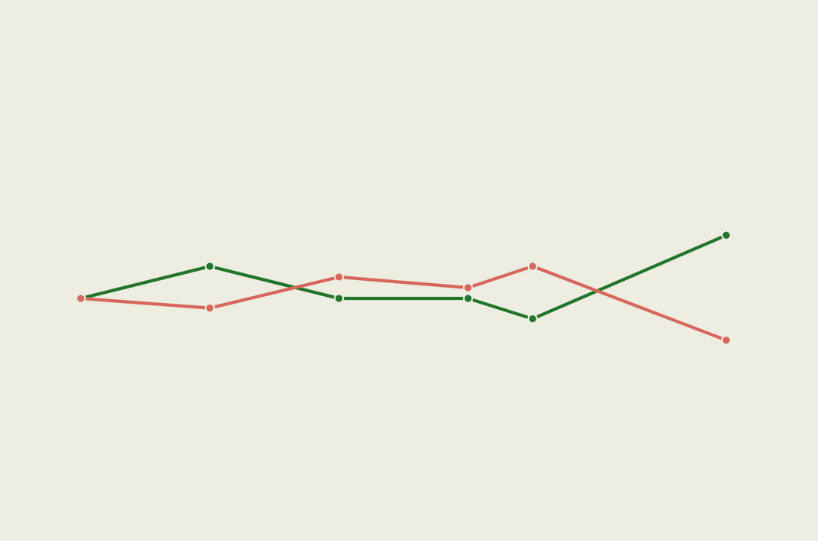Explainer: Conditional Cash Transfer Programs in Latin America
Explainer: Conditional Cash Transfer Programs in Latin America
AS/COA Online looks at the six biggest initiatives in the region intended to promote education and child health among low-income families.
Over the past two decades, numerous countries in Latin America created programs offering stipends to low-income families who meet certain requirements, such as sending children to school and attending regular medical check-ups. Brazil’s Bolsa Familia and Mexico’s Oportunidades count among some of the best-known initiatives, inspiring similar programs in the region and worldwide, from India to Ghana to the United States. AS/COA Online looks at Latin America’s largest programs in terms of number of families reached, examining the government funding involved, the requirements for families, as well as the latest updates to programs.
| On February 14, AS/COA will host a discussion on education policy in Latin America. Brazilian Senator Cristovam Buarque—who helped design and implement a conditional cash transfer program—and Argentine Senator Daniel Filmus will speak. Tune in to the live webcast or register to attend. |
Explore by country:
Argentina: The Asignación Universal por Hijo (Universal Child Allowance), or AUH, began in October 2009 under President Cristina Fernández de Kirchner. This program provides financial support to families with children 18 and younger in which the parents work in the informal sector or are unemployed. To be eligible, children must receive regular health check-ups and attend school. The program reaches 1.8 million households and over 3.5 million youth through the age of 18. In September, Kirchner announced the AUH benefit would increase from $54 to $68 per month. As such, the government will invest around $5.8 billion in the program—nearly 2 percent of the country’s GDP. Previously, a similar program started in 2002 called Plan Familias (Families Plan) targeted the same constituents. It allowed families with children through age 19 to participate, as well as giving a monthly stipend for youth and adults to complete high school or receive vocational training.
Brazil: Bolsa Familia, or Family Grant, delivers benefits to 13.9 million families in Brazil. Former President Lula Inácio Lula da Silva began the program in 2003, signing a law in January 2004 to establish the legal framework. Bolsa Familia combined a number of previous cash-transfer initiatives, such as Bolsa Escola (School Grant) and food subsidy benefits. Families who earn between $35 and $71 per month are eligible to receive the monthly stipend. Parents must bring children for regular medical check-ups, and students 15 and younger must attend at least 85 percent of classes. High school students between ages 16 and 17 must show at least 75 percent attendance. The World Bank estimates that Bolsa Familia and cash transfers for low-income elderly and disabled persons led to a 20 percent decrease in household income inequality from 2000 to 2010.
In June 2011, President Dilma Rousseff expanded the program to include Brasil Sem Miséria (Brazil Without Misery), allowing those who earn less than $35 per month eligible to receive benefits. In 2012, the government spent the record amount of $10.7 billion on Bolsa Familia—a 15 percent increase from the previous year. A December 2012 survey found that 73 percent of Brazilians support continuing the Bolsa Familia program.
Colombia: The Familias en Acción (Families in Action) program began in 2000 during then-President Andrés Pastrana’s administration. In June 2012, President Juan Manuel Santos signed the Families in Action law, laying out the long-term framework of the program. Under Santos, the program is now called Más Familias en Acción (More Families in Action). Approximately 2.3 million families participate in the program and the government hopes to add another 300,000 families this year. The Más Familias en Acción budget stands at $948 million this year, a nearly 55 percent increase from 2012. Since the program began, malnutrition among children aged two and under in rural areas decreased by 10 percent. School attendance for youth from the ages of 12 through 17 increased 12 percent in rural areas and nearly 6 percent in cities.
To participate in the program, families must have a child 18 or younger and live under the poverty line, or in indigenous communities. Families registered as part of the government’s program for displaced persons—those who fled their homes due to the country’s ongoing armed conflict—are also eligible. Mothers receive benefits for children between ages five and 18 who are enrolled in school and attend at least 90 percent of classes, ranging from $16 to $28 per month. Families also qualify for $33-per-month health subsidies for child nutrition and regular check-ups for children under the age of seven.
This year, the government also created the Jóvenes en Acción program, which will benefit 120,000 high school graduates from the ages of 16 through 24 with scholarships to attend vocational courses or technology education classes. Youth can apply for the program if their families are beneficiaries of the Más Familias en Acción program.
Ecuador: The Bono de Desarrollo Humano (Human Development Bond) program benefits 1.2 million mothers as well as 700,000 senior citizens and disabled persons who each earn $50 per month. The initiative began in 2003 under then-President Lucio Gutiérrez, combining two previous cash transfer programs.
Families qualify if they live under the poverty line and have children 15 and younger. Children age six and younger must go to the doctor twice a year, and children from the ages of six through 15 must enroll in school and attend at least 90 percent of classes. Last year, families received $35 per month. To finance the $15-per-month increase, Ecuador’s banks will provide $164 million, while the government will pay $140 million.
Mexico: Initiated during the administration of President Vicente Fox in 2002, the cash-transfer program Oportunidades (Opportunities) replaced a previous program, Progresa, started in 1997. Around 6.5 million families participate in Oportunidades, a 30 percent increase since 2006. Overall, about 30 million people—roughly a quarter of the country’s population—receive benefits through Oportunidades and food subsidies from the Social Development Secretariat.
In order to qualify, families living below the poverty line must have children 22 years or younger enrolled in school. Mothers receive cash transfers bimonthly, with educational grants given for students from the first year of primary school (age six) through the final year of high school (up to age 21). These grants increase with age, and amounts are higher for girls. Families must attend preventative health care appointments, and receive funds for food and nutritional supplements for babies. Eligible students who finish high school before they turn 22 also earn a bonus of around $315.
From 1997 to 2009, high school enrollment rates nationwide rose 33 percent, and preventative healthcare visits grew by 35 percent. In 2013, the Mexican government will spend $5.1 billion on Oportunidades, which more than doubled its budget since 2006.
Peru: The Juntos (Together) program was created in June 2005 during President Alejandro Toledo’s administration. Formerly run by the president’s ministerial council, President Ollanta Humala transferred the program’s management to the Ministry of Development and Social Inclusion in January 2012. In 2013, the government will invest nearly $388 million in Juntos and plans to add another 185,000 households to the program. Currently, an estimated 550,000 families participate in Juntos.
Families qualify for the program if they live below the poverty line and have children 14 or younger, or if the mother is pregnant. Children must enroll in school and attend at least 85 percent of classes, as well as receiving regular medical check-ups. Children under the age of five receive nutritional supplements. Mothers earn around $77 every two months through the program.








